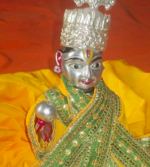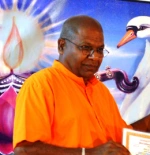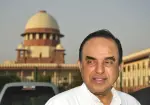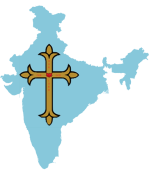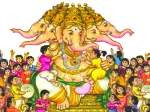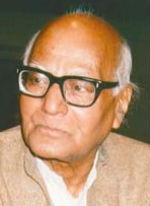 Since the advent of secular democracy in 2008, when the decade-long communist insurgency ended with the resignation of the last king and a pledge to draft a new constitution, Christianity has enjoyed a growing appeal among Nepal’s hill tribe minority groups, such as the Kirats and the Dalits. – Peter Janssen
Since the advent of secular democracy in 2008, when the decade-long communist insurgency ended with the resignation of the last king and a pledge to draft a new constitution, Christianity has enjoyed a growing appeal among Nepal’s hill tribe minority groups, such as the Kirats and the Dalits. – Peter Janssen
Saturday is the one day off in Nepal’s working week and therefore has become the holy day for Nepal’s growing Christian community. At the Nepal Isai Mandali-Gyaneshwor Church in Kathmandu about 300 Christians gather every Saturday to pray, sing hymns, listen to Bible sermons and praise the Lord, many of them reverently raising their hands to the ceiling and shouting out “Hallelujah,” “Trust in Jesus” and “Amen.” The Nepali congregation provides a glimpse of what early Christians communities might have been like — simple, friendly and egalitarian—before Rome took over.
“One thing I like about Christians is they believe all Christians belong to one family,” said M. J. Shah, whose own family are descendants of the Shah monarchs who ruled Nepal for more than two centuries. When the country’s absolute monarchy ended in 2008, so did the reign of its last king, Gyanendra Bir Bokram Shah Dev, and the former Hindu kingdom was set on the path to a secular democracy.
“When I was growing up I was told Christianity was not for us. It was only for lower caste people,” said M. J. Shah, who “found Christ” in 2005. His family initially disowned him but have since reunited with him, in acknowledgement of his much-improved personal conduct since his conversion and marriage to another Christian. “Before, I was a gambler, a fighter, a drinker and a drug user. I used to beat people up. I was terrible,” he admitted.
M. J. Shah remains somewhat unique among Nepali Christians. Most significantly, he is related to the royal family and is therefore of a higher caste than most. Christianity has been on the rise since Nepal went secular, at least in name, in 2008. Previously Christian missionaries were banned from the kingdom. Now there are over 8,000 Christian churches in the country and more than one million converts, although exact estimates are difficult to find.
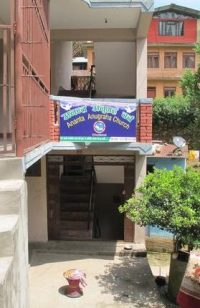 Need for acceptance
Need for acceptance
A more typical convert is Dil Maya, a 70-year-old woman from the Dalit, or “untouchable” caste. “My husband Dhan Bahadur fell very sick once and no doctor could cure him,” she said as she attended the Nepal Isai Mandali-Gyaneshwor Church in Kathmandu. “Someone told me to go to a church and pray and that was how I first came here. It healed my husband, and I felt healed, too because for the first time in my life, I felt accepted by a community. No one accepted me before. I feel accepted here.”
Since the advent of secular democracy in 2008, when the decade-long communist insurgency ended with the resignation of the last king and a pledge to draft a new constitution, Christianity has enjoyed a growing appeal among Nepal’s hill tribe minority groups, such as the Kirats and the Dalits. The Federation of National Christians in Nepal (FNCN) estimates that 60% of all Nepali Christians are Dalits, as is their chairman, C.B. Gahatraj.
Dalits account for an estimated 12% of Nepal’s 30 million-strong population, with most of them living in the southern regions neighboring India. Although caste prejudices are arguably on the decline in the new Federalist Nepal, they are still there, especially in rural areas. Dalits are still barred from Hindu temples and from sharing drinking or eating utensils with upper caste Nepalis. “They are converting because they are treated like animals,” M. J. Shah said. “We have to change the structure of our society … then no one would convert.”
The earthquake and aftershocks of April 2015 provided another fillip for the country’s “Christian soldiers.” The quakes, which destroyed more than 800,000 homes and left thousands dead, offered an opportunity for Nepal’s growing Christian community to do what Christians do best—provide charity to the poor and neglected in the name of “brotherly love.” Christian charities managed to distribute relief packages in some of the country’s most remote areas, which the government’s operations failed to reach due to lack of funding or manpower.
“I think the earthquake was one of the reasons for the growing popularity of Christianity,” said Chandra Man Nepali, FNCN’s vice general secretary. “Where the government was not able to reach, there were the Christians. We went to the hard-to-reach districts with food, water and medical supplies. We had funding from the churches outside. In this way, Christians were more helpful to society.”
The earthquake also gave rise to fears that Nepal’s fledgling Christian community was using the natural disaster to help proselytize their faith. Nepalese media reported several cases of Christian charities, notably South Korean ones, passing out Bibles with the relief provisions. Local Hindu politicians were quick to jump on the Christian charities for exploiting vulnerable populations.
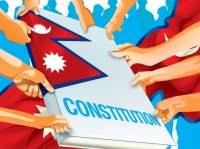 Ban on proselytizing
Ban on proselytizing
Under Nepal’s new constitution, pushed through in September 2015, people have the right to practice their religion but are barred from proselytizing. In fact, the charter implies that the country’s original religions—Hinduism, Buddhism and the animistic beliefs and practices of the Kirat minority (the indigenous race) should be protected. “Secularism means protection of religions and cultures being practiced since ancient times, and religious and cultural freedom,” reads the constitution. Christianity clearly does not qualify as an “ancient” sect in the former Hindu kingdom.
Legal experts argue that the constitution has good reason for banning Christians from advocating their beliefs. “The basic difference between Hinduism and Christianity is that in Hinduism you don’t have the concept of the church, and secondly you don’t have the concept of proselytizing,” said Bipin Adhikari, dean of the school of law at Kathmandu University. “The Hindus, Buddhists and Kirats don’t have the institutional apparatus to convert others so obviously they would like to see some reciprocity.”
Nepali Christians, however, see the anti-proselytizing clause as a form of discrimination. Another source of complaint is that Christian churches are not permitted to register as religious institutions but must do so as non-governmental organizations. Christian-run schools and medical clinics are often visited by local authorities to ensure they are not secretly converting students and patients.
Trying to keep a lid on proselytizing among newly-converted Christians goes against the tenets of the religion, which has from ancient times been about going out and “saving the world.” In modern Nepal, Christianity inspires the same evangelistic fervour it does elsewhere.
“When someone becomes a Christian they can’t shut their mouths from speaking about Christ. That is fundamental,” said Padam Parajali, a FNCN board member.
To date, Nepal’s Christian community has been spared the outright persecution and violent communal outbursts faced by other religious minorities such as Myanmar’s Rohingya Muslims. Even so, some Nepali Christians claim they face discrimination, for example in the jobs market or in general social attitudes. The overall sense of religious coexistence however may be due to the national character of tolerance that the Nepali people are renowned for. Nepali Christians might be wise to partake of that tolerance, at least in the short term.
“There is a sea-change going on in Nepal,” Adhikari said. “First, the monarchy is no longer there, second, the country is no longer a Hindu state, and third, the political system is being adapted as a federal system. So people are getting more educated and they are given more opportunities. The problem is that things move very slowly in Nepal.” – Nikkei Asian Review, 4 December 2016
» Peter A. Janssen is a prize-winning editor and record-setting publisher of US magazines and media.
Filed under: nepal | Tagged: christianity, church planting, conversion, missionaries, nepal constitution, proselytism, proselytize | Leave a comment »


